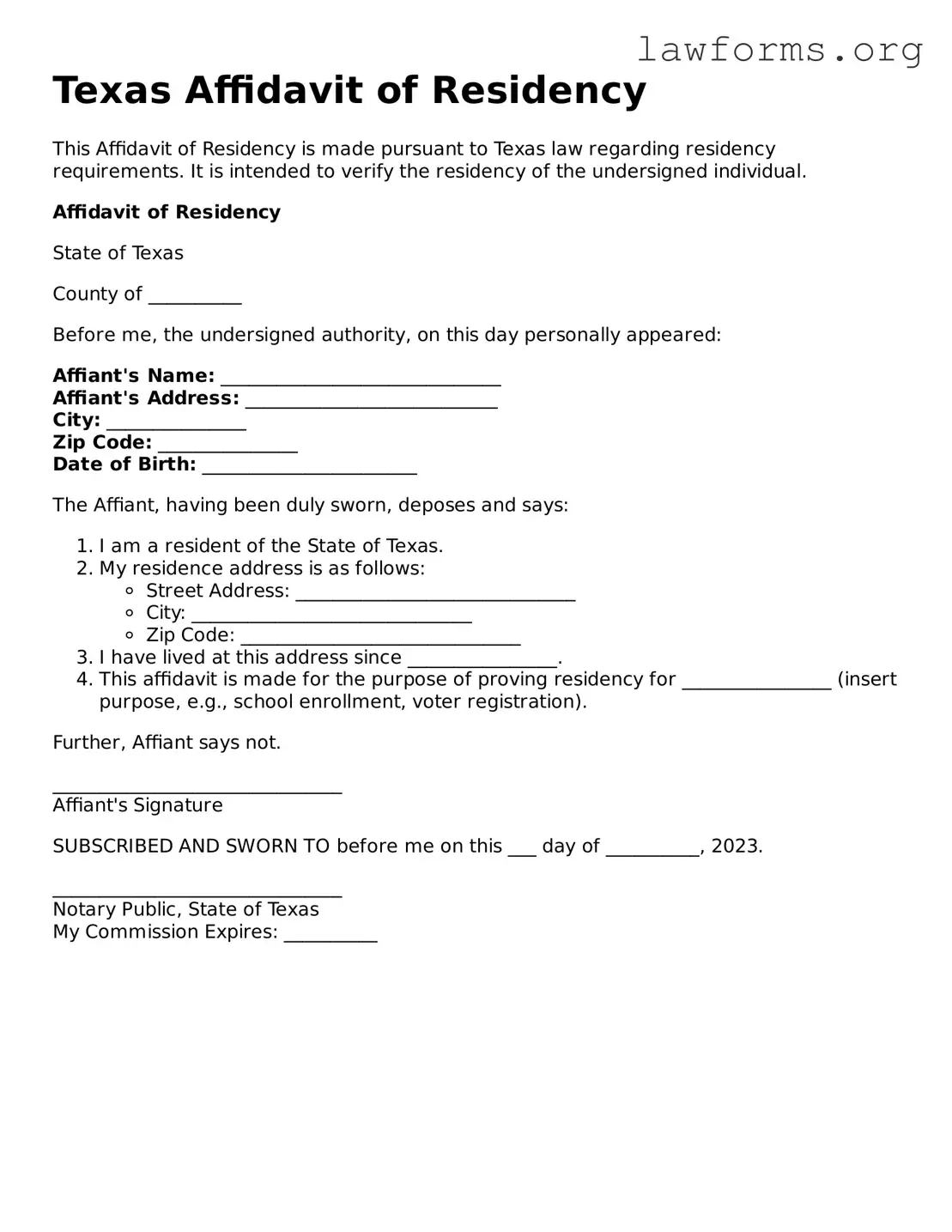Texas Affidavit of Residency
This Affidavit of Residency is made pursuant to Texas law regarding residency requirements. It is intended to verify the residency of the undersigned individual.
Affidavit of Residency
State of Texas
County of __________
Before me, the undersigned authority, on this day personally appeared:
Affiant's Name: ______________________________
Affiant's Address: ___________________________
City: _______________
Zip Code: _______________
Date of Birth: _______________________
The Affiant, having been duly sworn, deposes and says:
- I am a resident of the State of Texas.
- My residence address is as follows:
- Street Address: ______________________________
- City: ______________________________
- Zip Code: ______________________________
- I have lived at this address since ________________.
- This affidavit is made for the purpose of proving residency for ________________ (insert purpose, e.g., school enrollment, voter registration).
Further, Affiant says not.
_______________________________
Affiant's Signature
SUBSCRIBED AND SWORN TO before me on this ___ day of __________, 2023.
_______________________________
Notary Public, State of Texas
My Commission Expires: __________
